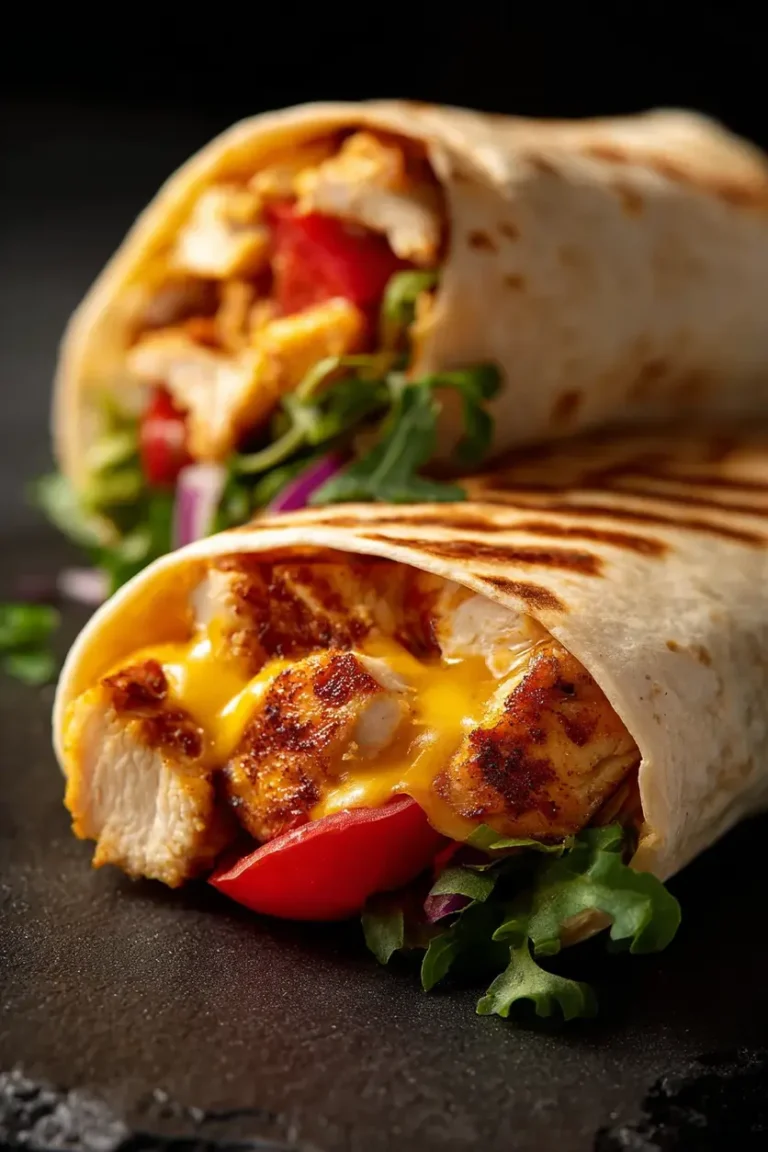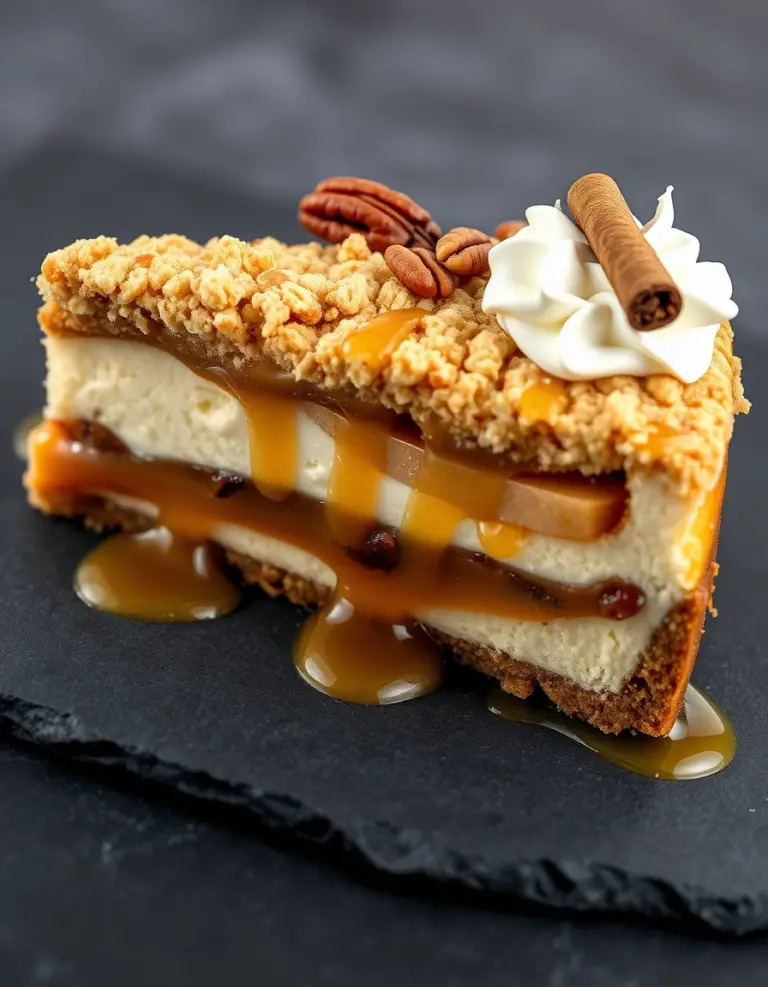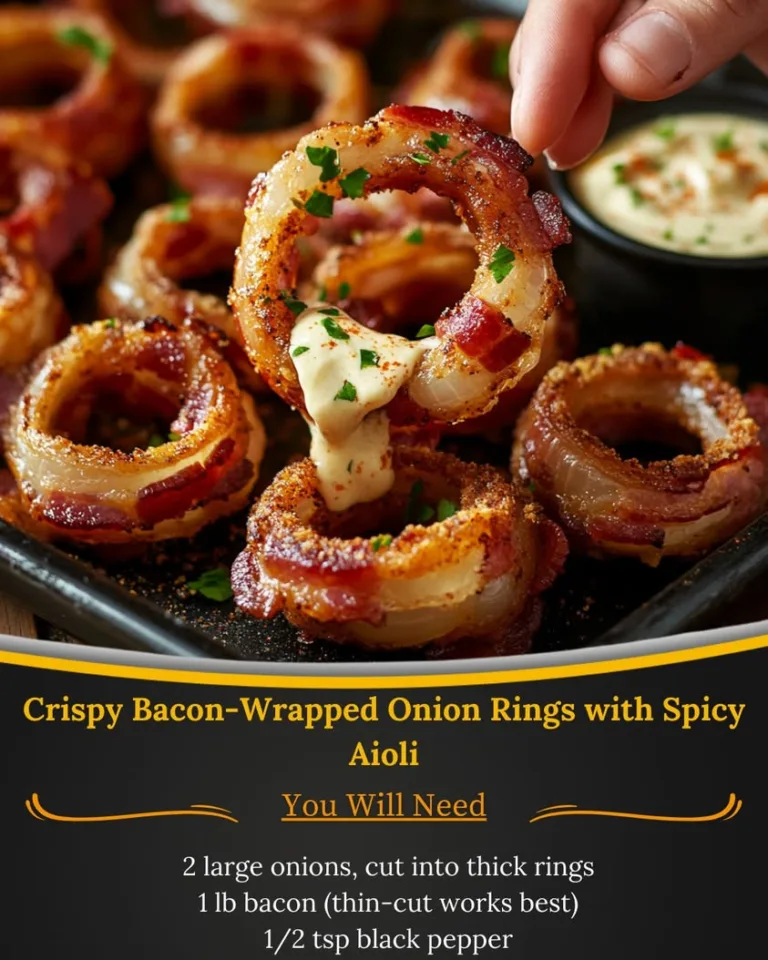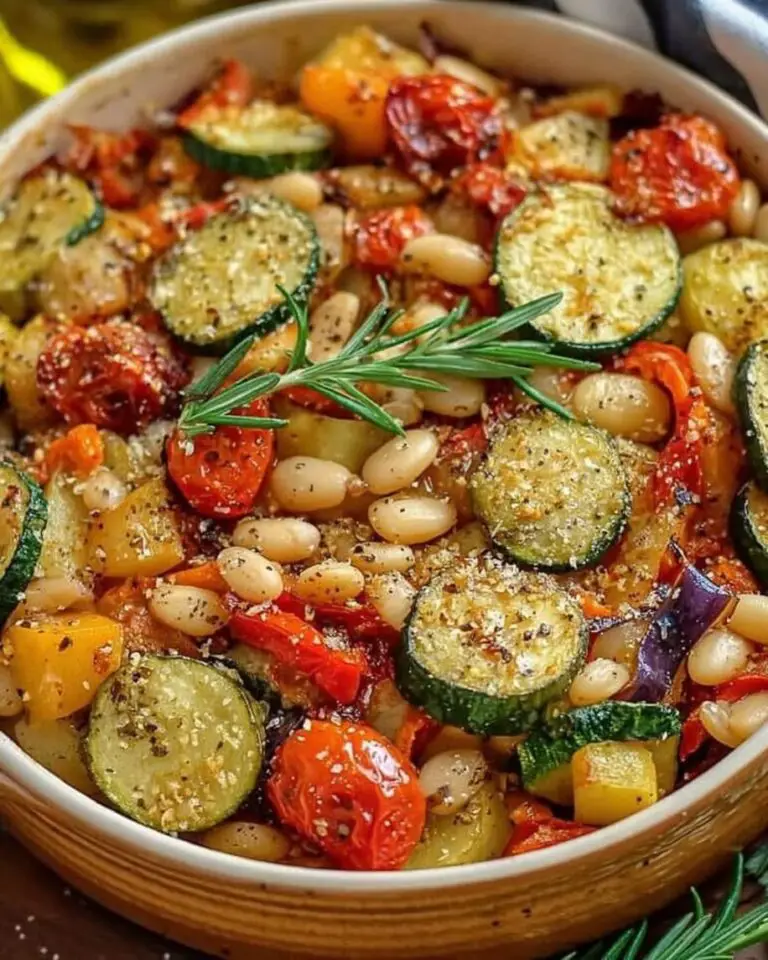Delicious Classic Fish and Chips Recipe with Tartar Sauce
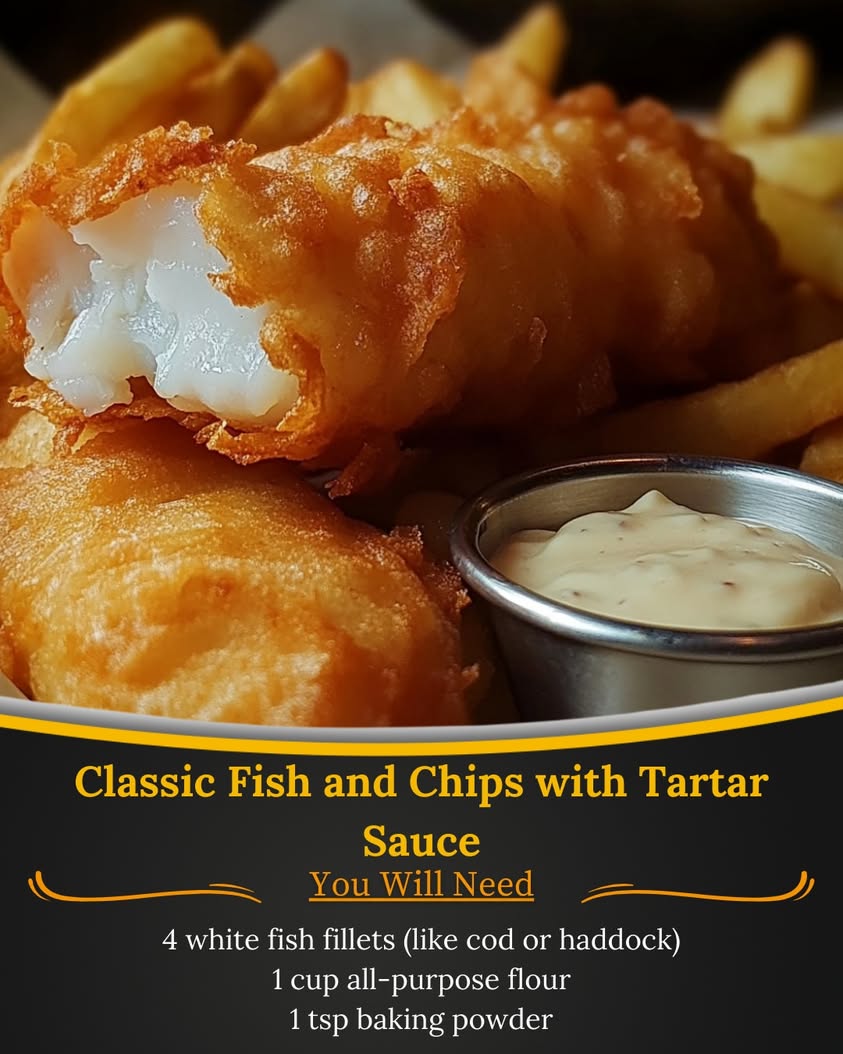
Classic Fish and Chips with Tartar Sauce: A Timeless British Delight
Fish and chips is more than just a meal; it’s an experience that transports you straight to the bustling streets of Britain. Imagine sinking your teeth into perfectly battered fish, golden and crispy, revealing flaky, tender flesh inside. Accompany this classic staple with thick-cut chips that are fluffy and soft in the middle yet satisfyingly crisp on the outside. A generous drizzle of tartar sauce enhances the flavors, bringing a tangy, creamy bite to each delicious mouthful. This classic dish is not only beloved by many but cherished for its humble origins.
The art of making fish and chips lies in balancing flavors and textures. The batter clings beautifully to the fish, creating a crunchy exterior that offers delightful contrast to the succulent interior. The chips, cooked to perfection, serve as the ideal canvas for the meal. To elevate this dish further, fresh herbs, a squeeze of lemon juice, or even a side of mushy peas can deeply enhance the authenticity and nostalgic appeal of this British classic.
Quick Recipe Highlights
- Flavor Profile: This dish features a delightful balance of savory seafood flavor complemented by a zesty dipping sauce.
- Texture: Expect a crunchy bite from the batter, combined with a tender fish inside, plus perfectly golden chips.
- Aroma: The enticing aroma of freshly fried fish mingled with the scent of crisp potatoes makes this dish enticing.
- Visual Appeal: A vibrant presentation with shiny tartar sauce, golden fish, and crispy chips is visually stunning.
- Skill Level Needed: Intermediate cooking skills are required for perfect frying and battering techniques.
- Special Equipment: A deep fryer or heavy skillet, plus a thermometer for checking oil temperature, will ensure crisp results.
Recipe Overview
- Difficulty Level: The moderate difficulty is due to the frying technique and ensuring the batter is light and crisp.
- Category: This recipe falls under main courses and is perfect for lunch or dinner.
- Cuisine: British cuisine, with a rich fishing heritage, prominently features fish and chips, making it a cultural staple.
- Cost: Ingredients for fish and chips can be budget-friendly, typically costing around $20 for a family meal.
- Season: Ideal for any season, fish and chips evoke a sense of comfort during cold spells or warm summer evenings.
- Occasion: Perfect for casual gatherings, family dinners, or celebrating British culinary traditions.
Why You’ll Love This Recipe
The delightful combination of flavor and texture in classic fish and chips is irresistible. The crispy batter encasing the tender fish creates an experience that tantalizes the taste buds, while the thick-cut chips serve as a satisfying side. Accompanying this is a homemade tartar sauce that enhances every bite, making this dish truly comforting and decadent.
Preparing this dish is a gratifying venture that brings a sense of accomplishment. The straightforward ingredients paired with relatively easy cooking techniques make it an enjoyable project for both novices and seasoned cooks. The process of frying adds a fun, engaging element to your cooking routine while allowing for creativity in flavors, especially with variations of herbs and spices.
Nutritionally, fish is an excellent source of protein and omega-3 fatty acids, essential for heart health. By choosing sustainable fish options, you contribute positively to the environment while enjoying a health-conscious meal choice. When served with homemade sauce and fresh ingredients, you can create a wholesome dish bursting with flavor.
Sharing fish and chips with friends or family creates a festive atmosphere. This dish is often associated with casual meal gatherings, complete with laughter and conversation. The sharing aspect also encourages pairing with various sides and drinks, ensuring everyone can savor a custom experience plate.
Cost-effectiveness is an appealing aspect of this recipe. Whether using fresh or frozen fish, the primary ingredients are affordable and easily accessible, allowing for hearty meals without breaking the bank. With smart shopping and meal planning, you can create satisfying dinners that appeal to a wide audience on any budget.
Historical Background and Cultural Significance
Classic fish and chips originated in the United Kingdom during the 19th century, during a time when fried foods were becoming increasingly popular. The combination of fried fish and chips quickly became a staple among the working class due to its nourishing qualities and affordability. Its reputation solidified when served in casual dining spaces known as chippies, which still exist today.
The cultural importance of fish and chips cannot be understated. During World War II, the dish served as a morale booster and symbol of British resilience. It remained a popular meal even during tough times, showcasing its significance in maintaining comfort and tradition. Today, it represents British culinary heritage worldwide, resonating with locals and visitors alike.
Over the years, variations of the traditional recipe have emerged. Different regions have taken the classic dish and infused local flavors, using various seasoning blends or alternative fish types, leading to unique adaptations while retaining the essence of fish and chips.
In addition to the love for the classic version, unique regional variations entice food enthusiasts. Some areas feature offerings like curry sauce or pies served alongside the chips, each inflection contributing to a broader understanding of fish and chips.
Ingredient Deep Dive
Fish
The choice of fish is crucial for achieving the best flavor in fish and chips. Traditionally, cod and haddock are the fish of choice due to their mild flavors and flaky textures. From a nutritional standpoint, both fish types are rich in lean protein, omega-3 fatty acids and essential vitamins, offering health benefits without excessive calories.
When selecting fish, freshness is key. Look for clear, bright eyes and firm, pink flesh. For a budget-friendly option, consider frozen fillets, but be sure to thaw them properly before use. If you’re exploring alternatives, tilapia and pollock can work well, although they will introduce different flavors and textures.
Potatoes
Potatoes are integral to the classic chip component, and their preparation is essential for achieving that perfect fry. Varieties like Maris Piper or Yukon Gold are favored for their ability to create crisp exteriors while remaining fluffy inside, offering an irresistible flavor experience.
Regarding storage, fresh potatoes should be kept in a cool, dark place to avoid sprouting. For a healthier option, consider oven-baked chips. However, authentic fish and chips utilize frying to achieve their signature taste, making selecting the right potato all the more important.
Batter
The batter plays a vital role in providing texture to the dish. Traditional recipes often include a simple mix of flour, water, and baking powder. This batter not only serves to flavor the fish but also secures moisture while ensuring a delightful crisp finish.
When preparing your batter, opt for chilled water to keep the texture light and airy. Substitutions like rice flour can enhance the crispness of the batter. Remember to add seasonings like salt or spices for extra flavor, enhancing the overall experience lead by this primary ingredient.
Tartar Sauce
Tartar sauce complements the fish and chips beautifully with its tangy and creamy profile. Typically made with mayonnaise, pickles, and lemon juice, it’s a classic condiment with significant flavor contributions. Making your own allows for customization, accommodating personal taste preferences while controlling the ingredients.
For nutritional benefits, consider using Greek yogurt as a base for tartar sauce to create a lighter version without compromising flavor, ensuring a delicious dip that pairs perfectly with your meal.
Common Mistakes to Avoid
- Using warm oil for frying: Ensure your oil is hot enough (around 350°F or 175°C) for crispy results; otherwise, the batter will soak up the oil and become greasy.
- Overcrowding the pan: Fry fish and chips in small batches to maintain oil temperature, which ensures an even cook and crunch.
- Skipping seasoning: Always season both the fish and the frying batter; seasoning elevates the overall flavor profile significantly.
- Not drying the fish: Moisture will create a soggy batter; pat the fish dry before battering to ensure a crisp finish.
- Choosing the wrong fish: Stick to traditional options like cod or haddock for the best results, as other fish may not replicate the desired texture.
- Inconsistent chip size: Cut chips uniformly to ensure that they cook evenly—thicker chips require longer cooking times.
- Ignoring the cooling process: Allow your fried items to rest on a wire rack, not paper towels, as this keeps them crisp by reducing steam.
- Leaving leftovers unrefrigerated: Always store any leftovers in an airtight container; leaving fish out can lead to spoilage and unpalatability.
- Using non-fresh ingredients: Always utilize fresh fish, as the flavor will significantly impact your dish’s overall quality—frozen fish can be suitable, provided it is thawed correctly.
- Overcooking the chips: Monitor cooking time closely, as over-frying can transform fluffy chips into chalky, hard bites.
Essential Techniques
Frying Fish
Frying fish is essential for achieving that classic golden-brown exterior. The key is to maintain your desired oil temperature throughout. Master the technique by gently adding fish one by one and adjusting heat as necessary—look for tiny bubbles around the fish as a good indication that oil is at the right temperature.
To avoid a greasy finish, refrain from moving the fish around too often. Use a thermometer for accurate readings, as visual cues alone might mislead you on achieving the desired crisp.
Preparing Chips
Perfectly cooked chips are pivotal to accomplishing the classic fish and chips experience. The double-fry technique is effective: first, fry them at a lower temperature for longer, then increase the temperature for a quick finish to achieve that golden crisp outside while keeping the inside fluffy.
Pay attention to oil temperature, and ensure each batch of chips is completely dry before frying. It’s also best to use starchy potatoes for optimal frying results, ensuring that you enjoy the best textural contrast.
Making Tartar Sauce
Tartar sauce can elevate the entire fish and chips experience with its creamy and tangy flavor dynamic. Use fresh ingredients for a bright taste, and feel free to experiment with different herbs and spices according to your palate.
Prepare tartar sauce in advance to let the flavors meld before serving; jarring together the simple ingredients leads to a richer taste that complements the dish beautifully. This is a great trick to engage more deeply in flavor layering for your meal.
Pro Tips for Perfect Classic Fish and Chips
1. **Chill your batter**: Keeping your batter chilled will encourage a light texture and keep the fish crisp after frying.
2. **Use a heavy-bottomed pot for frying**: A thick pot retains heat better, ensuring even frying and preventing temperature drops when you add food.
3. **Incorporate beer for an extra-crisp batter**: Using beer in the batter not only adds flavor but also promotes a crispier finish.
4. **Opt for the right potatoes**: Choose floury potatoes, such as Russet, for fluffy chips; transfer them to ice water for a crisper texture.
5. **Monitor oil temperature**: Use a thermometer to check oil readiness; maintaining consistent heat is essential for the best texture and flavor.
6. **Serve immediately**: Enjoy your fish and chips while they are hot and fresh for the best experience; they lose crispness when sitting too long.
7. **Experiment with dips**: While tartar is traditional, offering other dips like malt vinegar or chili sauce can provide exciting flavor combinations.
8. **Add a pinch of seasoning to the chips post-frying**: For an extra flavor layer, sprinkle salt onto hot chips just after frying—this enhances taste while preventing moisture retention.
Variations and Adaptations
Fish and chips can be easily adapted to fit regional tastes and seasonal ingredients. For example, consider coating local fish with a spicy crumb mixture for a unique spin on the classic batter. Alternatively, different accompaniments like curry sauce or mushy peas can reflect local culinary traditions while staying true to the dish’s essence.
For a lighter take on the classic, try air-frying the fish and chips instead of deep-frying; you’ll still receive satisfying textures with less oil. Additionally, for a seasonal adaptation, use fresh herbs or citrus zest in the batter during spring or summer, reflecting the bright, fresh flavors associated with warmer months.
Dietary modifications also present exciting avenues—try gluten-free batter using chickpea flour or a keto version utilizing almond flour for those watching their carb intake while still enjoying beloved flavors.
Serving and Presentation Guide
Plating your fish and chips can enhance the dining experience significantly. Aim for a casual presentation—serve the fish laid over a mound of chips, garnished with freshly chopped parsley and lemon wedges for a pop of color.
Traditional accompaniments like pickled onions or malt vinegar can add flavor and heighten visual appeal. A small dish of homemade tartar sauce should be positioned alongside, providing both convenience and elegance while making it easy for guests to serve themselves.
Be mindful of temperature, ensuring that the fish is served immediately after frying. Warm plates can also enhance the experience, keeping food at the ideal temperature longer. For portion control, consider pre-portioning servings instead of placing all food on the table, directing focus where needed.
Wine and Beverage Pairing
Pairing wine and beverages with fish and chips can elevate your meal further. A crisp, dry white wine, such as Sauvignon Blanc or a light-bodied Pinot Grigio, enhances the flavors of the fish beautifully while balancing the batter’s richness.
For non-alcoholic options, try pairing with a tart lemonade or ginger beer, which can complement the fried flavors. If you’re a fan of robust beer, classic ales or lagers are excellent matches, bringing additional maltiness to the dish that elevates the experience.
When serving tea with this dish, opt for a light black tea, as it counteracts the deep flavors while adding a comforting touch. Temperature is crucial; serve beverages chilled or at room temperature depending on your selection for an optimal pairing.
Storage and Shelf Life
Proper storage can extend the life of leftover fish and chips. If you have any remaining items, cool them quickly and place them in an airtight container. Refrigeration is best for maximally retaining freshness, and the leftovers can comfortably stay fresh for up to three days.
When reheating, avoid microwaving fish and chips, as this often leads to soggy textures. Instead, opt for an oven or an air fryer, preheating the oven to 350°F (175°C) and allowing the food to heat evenly while ensuring the crispiness remains intact.
If you choose to freeze your leftovers, consider separating fish and chips to make reheating easier and maintain quality. Consume frozen leftovers within a month for the best flavor and texture. Make sure to check for any signs of spoilage before consuming, as freshness is key.
Make Ahead Strategies
For those looking to streamline the cooking process, consider pre-prepping ingredients. You can prepare the batter in advance and store it in the fridge for up to a day. Chips can be cut and stored in water overnight to maintain freshness.
Fish can be prepared ahead by seasoning and breading, then kept in the fridge, making it easy to quickly fry just before serving. This step will help save time while still delivering a fresh and crispy final product when it’s mealtime.
Assess the quality impact of pre-preparing, ensuring freshness while enhancing flavors through marination. Reheat fried components briefly to maintain crispness, and consider adding fresh elements like herbs or lemon zest just before serving to elevate flavor profiles.
Scaling Instructions
For those looking to scale their classic fish and chips recipe, whether halving or doubling requires careful consideration. When halving, ensure consistency in cutting potatoes and fish sizes to maintain cooking times while also dividing batter ingredients evenly for precision.
If planning to make larger quantities, assess your frying equipment’s capacity. Adjust cooking times accordingly, as thicker batches will require slightly longer cooking hardware, ensuring that oil temperatures remain stable for a perfect finish.
Post-cooking, aim for effective storage strategies if food remains. Store in suitable containers respectful of the increased volume while ensuring no cross-flavors occur. Consolidating chips and fish separately further encourages quick reheating.
Nutritional Deep Dive
Fish and chips provide a hearty meal option, offering significant nutritional balance. The protein content in fish contributes to muscle health and repair; cod, for example, provides around 20 grams of protein per 100 grams, making it a strong protein choice within a diet.
Looking at micronutrients, fish is often fortified with vitamin D, an essential nutrient for bone health, while combined with the dietary fiber from potatoes, offering fullness and digestive health.
Portion analysis is critical, as standard servings provide satisfying nutrition while managing caloric intake. With proper balance in ingredients and methods, fish and chips can be enjoyed as part of a healthy eating approach without compromising on flavor or enjoyment.
Dietary Adaptations
For those requiring dietary modifications, fish and chips can easily adjust to meet various needs. A gluten-free batter using rice flour or gluten-free all-purpose flour is a simple swap for traditional flour, ensuring everyone can enjoy the dish.
Dairy-free options can also be explored, utilizing non-dairy alternatives in tartar sauce, such as cashew cream or vegan mayonnaise. For those following low-carb diets, substituting potatoes with zucchini or turnip fries can achieve that crispiness without excessive carbs.
Additionally, pescatarian or keto diets can flourish with modifications. Sticking with traditional fish like salmon or trout provides fantastic flavor and healthy fats, aligning perfectly within these diets. Offering customization options keeps the meal appealing and inclusive for guests with dietary restrictions.
Troubleshooting Guide
For those struggling with achieving perfect fish and chips, here are common troubleshooting solutions. When facing texture issues like greasy fish, restrict yourself to only a small number of pieces while frying to keep oil temperatures consistent.
If your batter fails to adhere correctly, ensure moisture is removed from the fish before dipping. On the contrary, if the batter is too thick, add a touch more cold water to reach the desired consistency.
For flavor balance problems, taste test your batter before cooking, adding more salt or spices as needed to preemptively avoid bland results. Finally, if timing concerns arise, utilize a cooking thermometer to make precise timing choices enhance your frying technique.
Recipe Success Stories
Community feedback on classic fish and chips reveals its universal appeal. Many readers have praised the recipe for its authenticity while expressing excitement in experimenting with various adaptations, lending itself well to regional variations and personal twists.
Success stories include those who found joy in preparing fish and chips at home for the first time, noting how the familiar elements brought a piece of British culture into their kitchens. Sharing photography tips has encouraged a sense of community engagement, with many users showcasing beautiful plating and suggesting creative dips.
Reader suggestions have also encouraged exploring additional garnishes, many touting herbs and seasoning combinations that further enhanced the dining experience. The conversational nature of sharing recipes nurtures a supportive environment that embraces creativity and cultural connection.
Frequently Asked Questions
How can I make fish and chips gluten-free?
To make fish and chips gluten-free, substitute traditional flour with rice flour or a gluten-free all-purpose blend in the batter. Additionally, choose gluten-free breadcrumbs if opting for a crumb coating.
What type of fish is best for frying?
The best types of fish for frying in a fish and chips recipe are cod and haddock due to their mild flavor and flaky textures. Other suitable options can include pollock or tilapia, depending on your preference.
Can I make the batter ahead of time?
Yes, you can prepare the batter ahead of time and store it in the refrigerator for up to 24 hours. Just be sure to mix it again gently before using, as some separation may occur.
What’s the best way to reheat leftover fish and chips?
The best way to reheat fish and chips is in a preheated oven at 350°F (175°C) for about 10-15 minutes. This method helps to retain the crispy texture instead of using a microwave.
Can I freeze leftovers?
Yes, you can freeze leftovers. Ensure the fish and chips are stored in an airtight container and consumed within a month for the best quality. Reheat in the oven to restore crispness.
How do I achieve crispy chips?
To achieve crispy chips, cut them uniformly and soak them in cold water for about 30 minutes before frying. Fry them in hot oil twice: first at a lower temperature and then again at a higher temperature for that perfect crunch.
Is there a vegetarian alternative to fish and chips?
Yes! You can substitute fish with battered vegetables like zucchini, eggplant, or mushrooms, maintaining the classic flavors while providing a vegetarian twist on the dish.
What oil should I use for frying?
Ideal oils for frying include vegetable oil, canola oil, or peanut oil, each with high smoke points necessary for achieving crispy results without burning.
Can I air-fry fish and chips?
Yes, air frying is a healthier alternative that can still lead to delicious results. Coat the fish and chips lightly in oil before placing them in the air fryer at about 400°F (200°C) for optimum crispiness.
What dipping sauces pair well with fish and chips?
While tartar sauce is traditional, other great dipping options include malt vinegar, lemon wedges, a zesty garlic aioli, or even a spicy sriracha mayo.
Additional Resources
Explore additional recipes that complement fish and chips, such as tartar sauce variations or homemade mushy peas. Technique guides that delve into frying mastery can enhance your skill set, while information on fresh fish sourcing will inform your choices.
Consider equipment recommendations to optimize your frying needs, including the benefits of using a thermometer or air fryer for better results. Lastly, be mindful of seasonal variations that inspire fresh ingredients; these can lead to surprising adaptations of classic recipes that keep meals dynamic.
Join the Conversation
Engaging with a community around food can take your culinary experience to another level. Sharing your successful fish and chips creations on social media can inspire others to try making this classic dish, while photography showcases can promote beautiful presentations.
Your recipe reviews and feedback are valuable—your personal stories and adaptations enrich the culinary narrative, encouraging others to embrace their creativity. Feel free to discuss variations, engage in recipe swaps, and enhance the sense of community centered around enjoying food together.
The Recipe
Classic Fish and Chips
Serves: 4 servings
Prep Time: 20 mins
Cook Time: 30 mins
Total Time: 50 mins
Kitchen Equipment Needed
- Deep fryer or heavy-bottomed pot
- Thermometer
- Mixing bowls
- Knife for cutting potatoes
- Slotted spoon or spider
- Wire rack for cooling
Ingredients
- 4 pieces of white fish fillets (cod or haddock)
- 2 large potatoes (for chips)
- 1 cup all-purpose flour
- 1 cup cold water or beer
- 1 tsp baking powder
- Salt and pepper to taste
- Oil for frying (vegetable or canola)
- For tartar sauce: 1 cup mayonnaise, 2 tbsp dill pickles (chopped), 1 tbsp lemon juice, salt and pepper to taste
Directions
- Begin by preparing the tartar sauce. In a bowl, combine mayonnaise, chopped pickles, lemon juice, and season with salt and pepper. Mix well and refrigerate until serving.
- Peel and cut the potatoes into thick chips or wedges. Soak in cold water for 30 minutes, then drain and pat dry.
- Prepare the batter by mixing flour, baking powder, salt, and cold water (or beer) in a bowl until smooth and consistent. Let it rest for 10 minutes.
- Heat oil in your deep fryer or pot until it reaches 350°F (175°C).
- Carefully dip each fish fillet in the batter and gently place in hot oil. Fry until golden brown, about 5-7 minutes. Remove and drain on a wire rack.
- Add the chips to the hot oil and fry for 5-6 minutes or until crisp and golden. Drain them on the wire rack too.
- Serve immediately with prepared tartar sauce and lemon wedges on the side.
Recipe Notes
- For a lighter batter, consider adding a touch of cornstarch.
- Feel free to experiment with different fish types according to your preference.
- Make homemade chips by baking or air-frying for a healthier alternative.
- Adjust seasoning in batter or tartar sauce according to taste.


